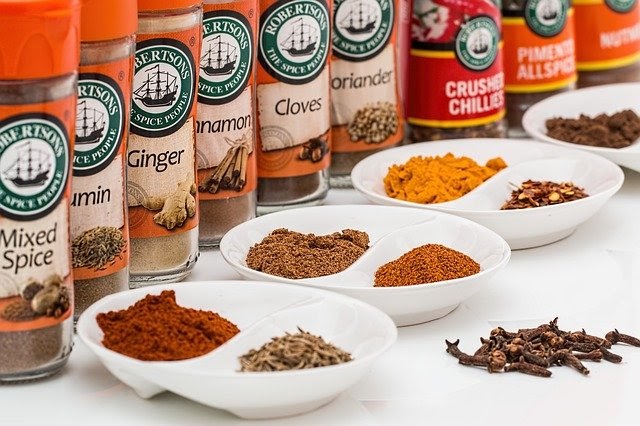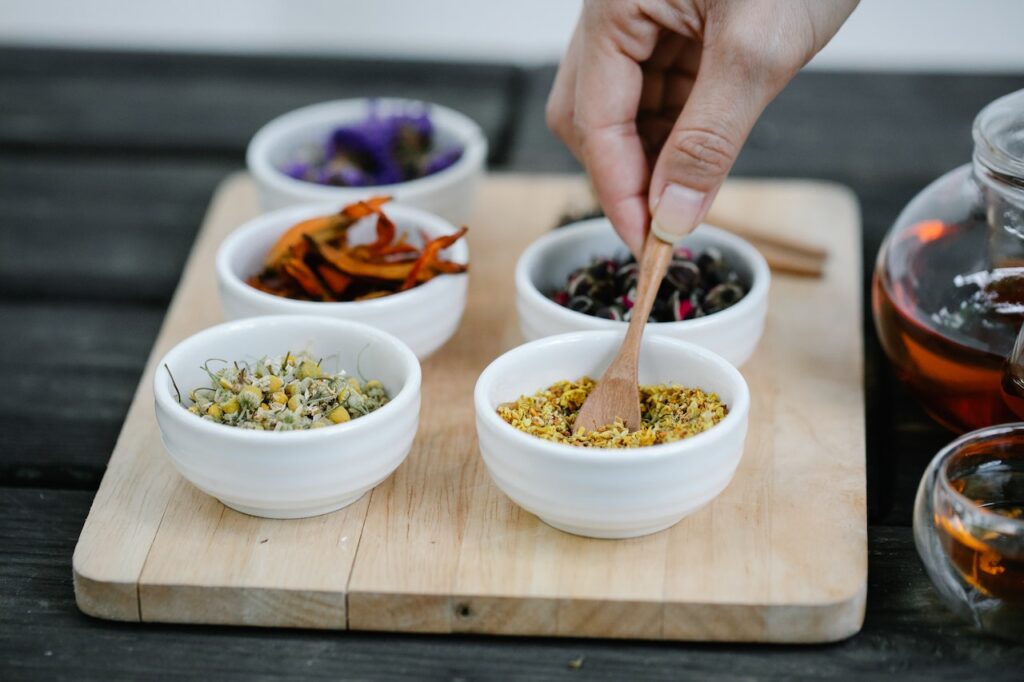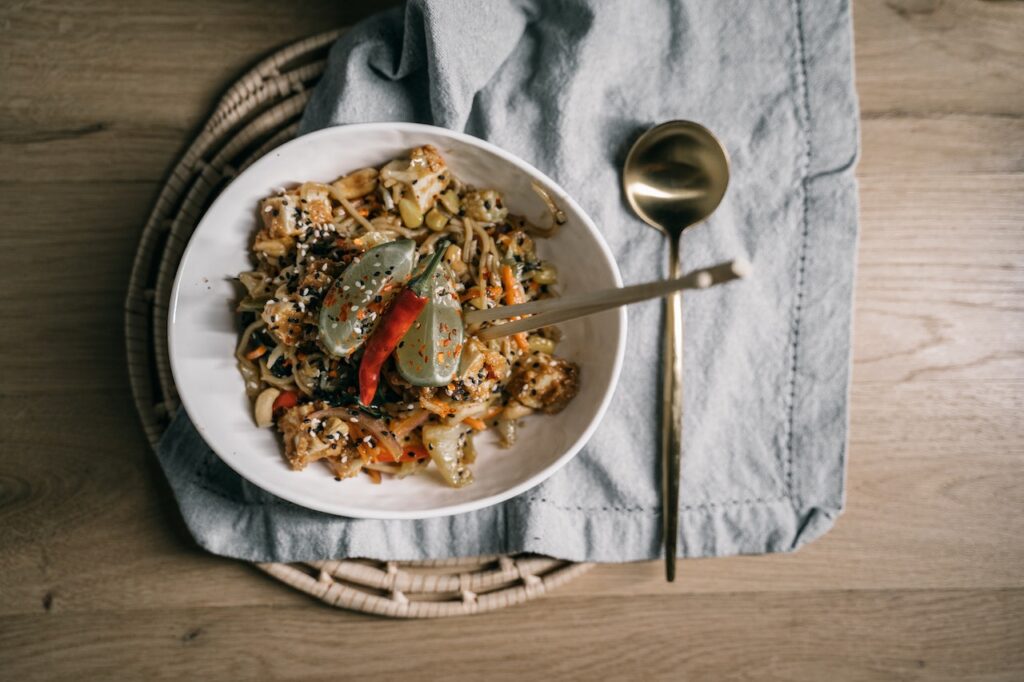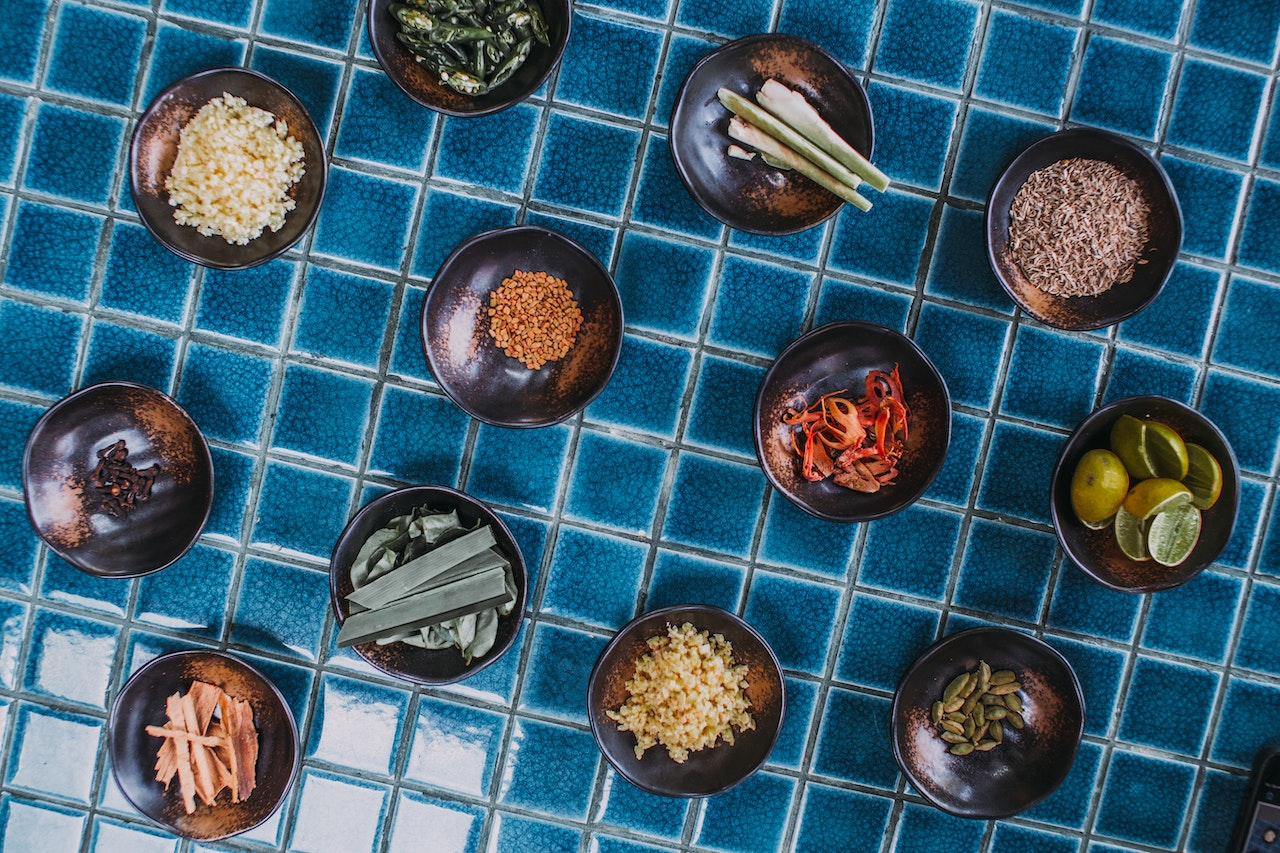As someone who has been on a gluten-free journey for quite some time now, I understand how challenging it can be to navigate the world of food while avoiding gluten. But let’s face it, we all want our meals to be flavorful and enjoyable, which often means incorporating spices into our dishes. However, one question that frequently pops up in the gluten-free community is, “Are spices gluten free?”.
Whether you have celiac disease or gluten sensitivity, maintaining a strict gluten-free diet is essential for your health and well-being. Considering the importance of steering clear of gluten and the potential risks of cross-contamination, it’s a valid concern.
In this blog post, we’ll explore the truth about spices and their potential impact on those with gluten sensitivities, so you can continue to enjoy various delicious meals without fear of gluten exposure.
What is Gluten?
Before diving into the world of spices and their gluten content, it’s essential to clearly understand what gluten is and how it affects those with celiac disease.
Gluten: What It Is and Where It Comes From
Gluten is a protein found primarily in wheat, barley, and rye. This protein plays a crucial role in giving dough its elastic texture, allowing it to stretch without breaking apart. This elasticity provides bread, pasta, and other baked goods with a chewy, satisfying texture.
For example, think about the difference between a soft, fluffy slice of wheat bread and a more dense, crumbly gluten-free loaf. That difference in texture is largely due to the presence or absence of gluten.
Unfortunately, gluten isn’t limited to obvious sources like bread and pasta. Experts also consider them a thickening agent or stabilizer in various processed foods, such as sauces, soups, and salad dressings. It is why those with gluten sensitivities need to read labels carefully and be aware of potential hidden sources of gluten.
The Impact of Gluten on Individuals with Celiac Disease
For most people, consuming gluten doesn’t cause any issues. However, gluten triggers an autoimmune response in those with celiac disease that damages the small intestine. This damage can lead to various health problems, ranging from mild discomfort to severe complications.
When a person consumes gluten and has celiac disease, their immune system inaccurately attacks the small intestine lining, leading to inflammation and damage to the tiny, finger-like projections called villi. These villi are responsible for absorbing nutrients from food, and when they become damaged, the body struggles to absorb essential nutrients properly.
Symptoms of celiac disease can vary widely, but some common ones include abdominal pain, bloating, diarrhea, constipation, and fatigue. In my experience, the symptoms can be quite debilitating, affecting not only my physical health but also my emotional well-being.
Long-term, untreated celiac disease can lead to complications such as malnutrition, osteoporosis, infertility, and even certain types of cancer. It is why individuals with celiac disease must maintain a strict gluten-free diet and be vigilant about avoiding gluten in all its forms.
Are Spices Gluten Free?

Now that we have a solid understanding of gluten and its effects on individuals with celiac disease, let’s explore the primary concern: Are spices gluten-free? As someone who loves cooking and experimenting with flavors, I know how important it is to ensure that the spices I use are safe for my gluten-free lifestyle.
The Gluten-Free Status of Most Spices
The good news for those of us following a gluten-free diet is that most single-ingredient spices are naturally gluten-free. They are from plant sources that do not contain gluten, such as seeds, bark, or roots. For example, cinnamon comes from the bark of cinnamon trees, while paprika comes from ground red peppers. In their pure form, these spices are safe for those with gluten sensitivities to consume.
However, there are some situations where spices might contain gluten or be at risk of cross-contamination, which we need to be aware of when making our spice selections.
Potential Gluten Contamination in Spices
Spice Blends and Mixes
While single-ingredient spices are generally gluten-free, spice blends and mixes often contain multiple ingredients, including starches and other additives that may contain gluten. For instance, some seasoning blends like taco seasoning or curry powder might use wheat flour as a thickening agent or anti-caking ingredient.
It’s essential to read the labels carefully when purchasing spice blends to ensure they don’t contain any gluten-containing ingredients. Alternatively, you can look for gluten-free spice blends or be certified by a trusted third-party organization, such as the Gluten-Free Certification Organization (GFCO).
Cross-Contamination
Cross-contamination can occur during manufacturing if shared equipment processes the spice with gluten-containing products. It is particularly relevant for bulk spices bought from stores where scoops may be used for multiple products, increasing the risk of contamination.
Minimize the risk of cross-contamination by buying spices from reputable brands that follow good manufacturing practices and have allergen control programs in place. Additionally, purchasing spices in sealed containers rather than from bulk bins can help reduce the chances of gluten exposure.
Single-Ingredient Spices: Your Gluten-Free Flavor Enhancers

Here’s a list of some popular gluten free spices to add flavor to your dishes:
🧅Cinnamon
Cinnamon is a warm and sweet spice derived from the bark of cinnamon trees. It’s incredibly versatile and can use in many dishes, from sweet treats like cinnamon rolls and apple pie to savory recipes like Moroccan tagines and roasted vegetables. A sprinkle of cinnamon can also elevate your morning oatmeal or smoothie, adding depth and natural sweetness.
🧅Paprika
Made from ground red peppers, paprika adds mild heat and vibrant color to your meals. It’s a key ingredient in Hungarian goulash and Spanish paella and can enhance the flavor of grilled meats, roasted potatoes, and even homemade salad dressings. With variations like sweet, smoked, and hot paprika, there’s a type to suit every palate.
🧅Nutmeg
Nutmeg is a warm, nutty spice that works well in sweet and savory dishes. It’s commonly used in holiday recipes like eggnog and pumpkin pie but also pairs beautifully with cream sauces, spinach dishes, and even sprinkled on top of a cappuccino. A little goes a long way with nutmeg, so use it sparingly to avoid overpowering your dish.
🧅Cumin
Cumin is an earthy spice often used in Indian, Middle Eastern, and Mexican cuisines. It adds depth and complexity to curry, chili, and taco seasoning. You can use cumin in its ground form or toast whole cumin seeds to release their aromatic oils and enhance flavor.
🧅Turmeric
Turmeric is known for its vibrant yellow color and warm, peppery flavor. A staple in Indian cuisine, it’s the primary ingredient in curry powder and is often used in rice dishes, soups, and stews. Turmeric has gained popularity recently for its potential health benefits, making it a sought-after addition to smoothies, teas, and golden milk lattes.
🧅Ginger
Fresh or dried, ginger adds a zesty and slightly sweet flavor to various dishes. It’s a key component in Asian cuisine, featured in stir-fries, soups, and dipping sauces. Ginger also works well in baked goods like gingerbread cookies and ginger cake and can add a kick to your morning green juice or soothing evening tea.
🧅Garlic powder
Garlic powder is a versatile spice that adds a savory, intense flavor to your meals without the need for fresh garlic. It’s perfect for seasoning meats, vegetables, and pasta dishes and incorporating homemade spice blends and dry rubs. Remember that garlic powder is more concentrated than fresh garlic, so adjust the quantity accordingly.
🧅Oregano
A staple in Italian and Mediterranean cuisine, oregano brings a slightly bitter, aromatic flavor to dishes. It pairs well with tomato-based sauces, grilled meats, and pizza. You can also season roasted vegetables, salad dressings, and marinades. Dried oregano tends to have a more intense flavor than fresh, so start with a small amount and adjust to taste.
How to Choose Gluten-Free Spices
When it comes to spices, it’s essential to make sure you choose gluten-free varieties. Follow these tips to ensure the safety of your gluten free spices and enjoy a wide array of flavors in your dishes without worrying about gluten exposure.
✔Read Labels Carefully
One of the most critical steps in ensuring the spices you use are gluten-free is to read the labels carefully. While most single-ingredient spices are naturally gluten-free, some spice blends and mixes may contain gluten as a thickening or anti-caking ingredient. For example, some taco seasonings or curry powders might use wheat flour as an additive.
When shopping for spices, look for products labeled gluten-free or certified by a trusted third-party organization, such as the Gluten-Free Certification Organization (GFCO). Knowing that the spice has been tested and confirmed to be gluten-free will provide peace of mind.
Additionally, it’s essential to review the ingredient list on the packaging to ensure there are no hidden sources of gluten. Some spices might not be gluten-free but could still be safe if they contain no gluten-containing ingredients.
✔Stick to Single-Ingredient Spices
Another important tip for choosing gluten free spices is to stick to single-ingredient spices whenever possible. It is because single-ingredient spices, like ground cinnamon or paprika, are less likely to contain gluten than spice blends or mixes, which often include multiple ingredients and additives.
Using single-ingredient spices gives you more control over what goes into your meals and can minimize the risk of gluten exposure. Creating your spice blends at home allows you to customize the flavors to suit your preferences. For instance, you can experiment with different cumin, paprika, and powdered chili ratios to create the perfect homemade taco seasoning.
✔Buying from Reputable Brands
Purchasing spices from reputable brands is another crucial aspect of ensuring your spices are gluten-free and safe for consumption. Well-established brands are likelier to have strict allergen control programs and adhere to good manufacturing practices, reducing the risk of cross-contamination with gluten-containing products.
Some reputable spice brands that offer gluten-free options include McCormick, Simply Organic, and Penzeys Spices. These companies are transparent about their manufacturing processes and provide clear labeling on their products, making it easier for consumers to identify gluten-free options.
When shopping for spices, looking for brands that specifically cater to the gluten-free community or have a dedicated gluten-free product line is also helpful. It shows a commitment to meeting the needs of those with dietary restrictions and ensures that the company understands the importance of preventing cross-contamination.
✔Avoiding Bulk Bins
While buying spices from bulk bins may be an eco-friendly and cost-effective option, it can pose a risk for those following a gluten-free diet due to potential cross-contamination. Bulk bins often contain various products, including gluten-containing grains, which can contaminate the scoops and utensils used for dispensing the spices.
The risk of cross-contamination also increases if the store doesn’t follow strict cleaning and sanitation protocols for their bulk bins and utensils. As a result, gluten-free individuals may inadvertently consume gluten when using spices from bulk bins.
Minimize the risk of cross-contamination by purchasing spices in sealed containers rather than from bulk bins. Sealed packaging offers an extra layer of protection against potential gluten exposure and ensures that the spices have not come into contact with other products during storage and transportation.
Tips for Preparing Dishes Using Gluten-Free Spices and Herbs

Finding flavorful dishes can sometimes be challenging for food enthusiasts with gluten sensitivities or allergies. However, with the right combination of gluten free spices and herbs, you can create mouthwatering meals that are both delicious and safe to eat. Here are some tips for creating gluten-free dishes using spices and herbs:
🥗Understand the Basics of Gluten and Allergies
Gluten is a protein found in wheat, barley, and rye. It’s responsible for the elasticity and chewiness of dough. However, many people suffer from gluten sensitivity or celiac disease, an autoimmune disorder that causes damage to the small intestine when they ingest gluten. Create allergy-friendly dishes by avoiding ingredients containing gluten and opting for gluten-free alternatives.
🥗Use Gluten-Free Spices and Herbs
While most spices are naturally gluten-free, some spice blends and prepackaged seasonings may contain gluten as a filler or anti-caking agent. Choose pure, unadulterated spices and herbs to ensure your dishes are allergy-friendly. Look for certified gluten-free labels or purchase from reputable sources specializing in gluten-free products.
🥗Experiment with Spice Blends
Creating your gluten-free spice blends is both fun and rewarding. Mixing different spices and herbs allows you to achieve unique flavors tailored to your taste preferences. Remember the balance of flavors – combining sweet, salty, sour, bitter, and umami elements will create a harmonious blend. Some popular gluten-free spice blends to try include:
- Italian seasoning: basil, oregano, rosemary, thyme
- Curry powder: coriander, cumin, turmeric, ginger, powdered chili
- Taco seasoning mix: chili powder, cumin, paprika, onion powder, garlic powder, oregano
🥗Enhance Flavors with Fresh Ingredients
In addition to gluten free spices and herbs, incorporate fresh ingredients like garlic, onions, and citrus zest to elevate the taste of your dishes. These ingredients add depth and flavor and provide a burst of freshness that complements the spices and herbs.
🥗Toast Your Spices
Toasting your spices before using them can significantly enhance their flavor. This simple step releases the essential oils within the spices, making them more aromatic and flavorful. To toast spices, heat a dry skillet over medium heat, add your spices, and stir continuously until fragrant. Be sure to watch them, as they can burn quickly.
🥗Store Spices Properly
Proper storage is key to maintaining the potency and flavor of your gluten free spices and herbs. Keep them in airtight containers away from heat, light, and moisture. Label them with the date of purchase, so you know when it’s time to replace them. Whole spices can last up to three years, while ground spices are typically best used within one year.
🥗Embrace Gluten-Free Grains and Starches
The key to crafting a delicious, allergy-friendly dish is finding the perfect balance between spices, herbs, and gluten-free grains or starches. You can discover exciting new flavors that cater to your taste buds by experimenting with different combinations.
For example, imagine preparing a warm quinoa salad infused with fragrant cumin, coriander, and a hint of lime zest. The nutty flavor of quinoa pairs beautifully with these aromatic spices, creating an unforgettable meal that’s both nutritious and flavorful.
Another idea is to cook a comforting bowl of creamy risotto made from Arborio rice, a naturally gluten-free grain. Enhance the dish with earthy rosemary, thyme, and garlic, and you’ll have a hearty meal to impress your family and friends.
Options like rice, quinoa, millet, and potatoes can serve as a satisfying base for your meals, complementing the flavors of your gluten-free spices.
Frequently Asked Questions
Q: Can I trust a spice labeled as gluten-free?
A: Yes, but it’s important to exercise caution. While the spice may not contain gluten, it could have been processed in a facility that processes gluten-containing products. While a gluten-free label indicates that a product should be safe for those with gluten sensitivities, it’s essential to ensure that the label comes from a reputable source.
Regarding spices specifically, the FDA has strict regulations about how manufacturers label their products as “gluten-free” or “made without wheat products.” The guidelines state that anything labeled “gluten-free” must contain less than 20 parts per million (ppm) of gluten. This low amount of gluten likely won’t cause problems for someone with celiac disease or other health concerns related to gluten intake. Look for products certified by a trusted third-party organization, such as the GFCO.
Q: Are organic spices gluten-free?
A: As someone sensitive to gluten, it’s important to me that I’m aware of what foods and ingredients are safe to eat. When it comes to spices, it can be easy to assume that they’re all gluten-free since they seem like such a small part of a recipe. However, some spices can contain hidden gluten, like those that may have been processed in a facility that handles wheat products.
That’s why I was glad to learn that organic ones are often a great option for avoiding gluten. Because they’re grown without pesticides or chemicals, there’s less chance of cross-contamination and fewer ingredients to worry about. Organics are often fresher and more flavorful, making them a great choice for any recipe.
Q: What makes a seasoning not gluten-free?
Even though many people think that seasonings are simply a blend of ground spices, the truth is that some seasonings contain gluten ingredients like wheat, rye, and barley. You can add them to improve the texture or taste of the seasoning, but unfortunately, they can also cause serious health problems for those who need to avoid gluten.
So when it comes to seasoning your food, always read the ingredients carefully and choose clearly marked gluten-free seasonings to protect your digestive health.
Q: Can I still react to spices even if they’re gluten-free?
A: For those who love cooking and trying new flavors occasionally, the question of how our body handles different spices is always lurking in our minds. Although gluten-free products are more widely available now, the truth is that many of us still experience various digestive problems after consuming them. So, the question remains: can I still react to spices even if they’re gluten-free?
Unfortunately, the answer is not as simple as a yes or a no. Spice reactions depend on several factors, including different sensitivities to the specific spice and how highly processed the spice is. It’s always helpful to listen to your body and track any symptoms arising after trying out a new spice. Don’t be afraid to consult a nutritionist or allergist if you’re still unsure how your body handles certain spices. Cooking should be enjoyable, so remember to experiment and listen to your body along the way!
Final Words
Navigating the world of gluten-free spices can be rewarding and enjoyable, allowing you to create flavorful and diverse dishes while maintaining a safe and healthy gluten-free lifestyle. As we’ve explored, most single-ingredient spices are naturally gluten-free, but there are potential risks associated with spice blends, cross-contamination, and sourcing from bulk bins.
By taking the necessary precautions, such as reading labels carefully, sticking to single-ingredient spices, purchasing from reputable brands, and avoiding bulk bins, you can confidently enjoy various flavors in your meals without worrying about gluten exposure.
As someone who has been down this path, I understand the challenges and triumphs of living a gluten-free lifestyle. I hope these tips will empower you to continue exploring new culinary adventures with confidence and enthusiasm. So, go ahead and embrace the world of gluten-free spices and discover the delicious possibilities they offer. Let us know in the comments below which spices you’ve tried and what new dishes you’ve created.

